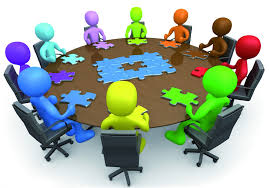
No matter how big or small your organization is, having a solid structure for your volunteer board and committees is one of the best ways to make sure your board is efficient, engaged, and adding value to your management team. While there are templates and guidelines galore for committee descriptions, not every organization will need (or be able to support) the same committee structure. This blog series will look at the most common standing committees, what they can do, what they really should do, and how to integrate them within your larger board structure.
First, let’s outline some basic concepts. Your committee structure should be outlined in your organization’s By Laws or, as they’re called in Ohio, Code of Regulations. I’ll be speaking to Ohio’s nonprofit corporation law, but in terms of committee powers, most states are very similar. If you’re not in Ohio, though, be sure to check you state laws to make sure there are no conflicting provisions.
The theory behind any committee structure, no matter how simple or robust, is that many hands make light work. While the whole board should be involved in certain activities, and should always be the final decision making authority for the organization, the detail work of researching, investigating and advising management to recommend actions should be done by smaller groups of volunteers. That way when you present a strategy to your board, you’ve really run down all the pros and cons and can put a viable plan in front of them to discuss and, hopefully, adopt.
Committees are also the place to pull in expertise from people who don’t sit on your board. Accountants, lawyers, industry experts, consultants, service providers, and others with specific experience in your service area often have much to offer in vetting possible strategies. These people are often not the best choice for board members, though, because they may not be willing or able to engage in the kind of fundraising, outreach or advocacy that your whole board really needs to do. (We’ll dive in to that more our post about development committees.)
Remember, most importantly, that committees are supposed to help management, not add to their work load. If you’re a nonprofit manager and you routinely worry about creating an agenda for committee meetings because you don’t know what they’re supposed to do, don’t feel like you have work for them, or don’t want to have to manage the less than helpful suggestions that come out of your committee meetings, then I’d like to suggest you don’t have the right committee structure. Your board and your committee structure are not the place to steward and engage your biggest donors. Any organization’s committee structure must be a reflection of the organization’s mission and work plans, and help your staff work most effectively.
Next up we’ll look at the Board Development Committee. Until then, practice removing the phrase “nominating committee” from your vocabulary!

